3. WCF-SAP Adapter vs WCF Customer Adapter with SAP binding
When we generate schemas for SAP artifacts, the binding file that is also generated will use the WCF-Custom Adapter with an SAP Binding Type. With this binding type selected, we can manipulate any SAP-related property.
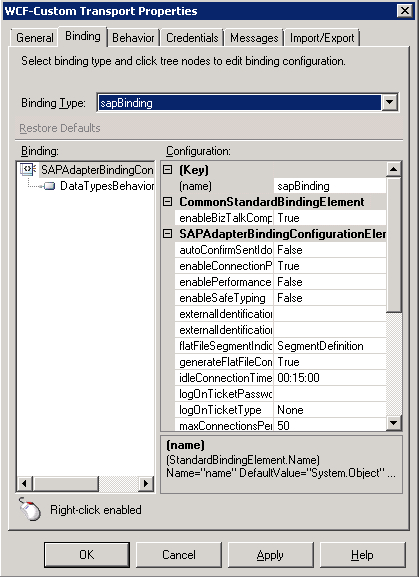
The challenge with using the WCF-Custom Adapter is
that when we configure the URI for our SAP server, the interface is not
very intuitive. The SAP connection string is confusing at best and one
missing key stroke will result in an error.
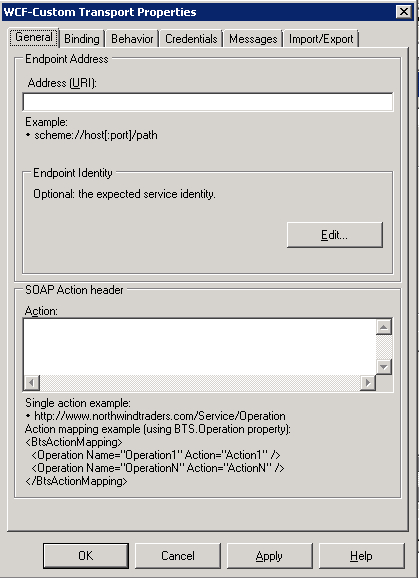
Conversely, the WCF-SAP adapter is a little more intuitive when we configure our SAP URI. By clicking the Configure button, we have a well-organized table to populate, which reduces the complexity of providing a valid SAP connection string.
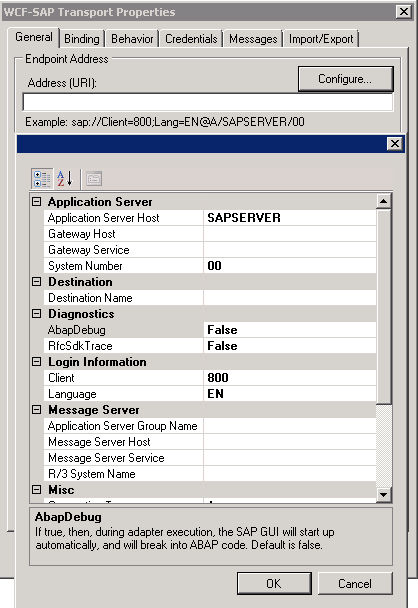
To create a WCF-SAP adapter, we need to perform the following steps:
Right mouse click on Adapters and then select New - Adapter.
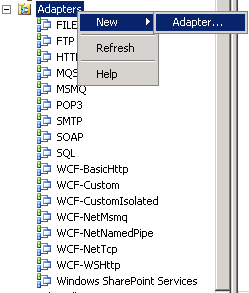
Click the Adapter drop-down list and select WCF-SAP. In the Name text box, type in WCF-SAP and click OK button.
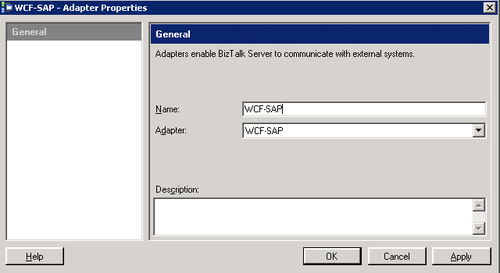
It is important to understand that no matter whether
you use the WCF-Custom Adapter or WCF-SAP Adapter, you are not losing
functionality. Using the WCF-SAP adapter simplifies the administration
tasks that are involved in maintaining our BizTalk environment. Since
the WCF-Custom adapter can leverage many different bindings including
Oracle, SQL, SAP, and bindings that allow us to connect to the cloud, it
is beneficial to explicitly create these adapters to avoid confusion.
4. Supported SAP configurations
The following SAP configurations are supported. New
to BizTalk 2010 is the support for SAP 7. The SAP system that is being used is SAP ECC 6.0 but the
following versions are supported:
Supported server versions: SAP 7, SAP ECC 6.0
Unicode, SAP ECC 5.0 Non-Unicode, SAP ECC 5.0 Unicode, SAP R/3 4.7
Non-Unicode, SAP R/3 4.7 Unicode, SAP R/3 4.6c Non-Unicode, SAP ERP 6.0
with EHP 4.0
Supported client versions:
SAP RFC SDK 7.11 UNICODE, SAP RFC SDK 7.1 UNICODE, SAP RFC SDK 7.0
UNICODE, SAP RFC SDK 6.4 UNICODE&;